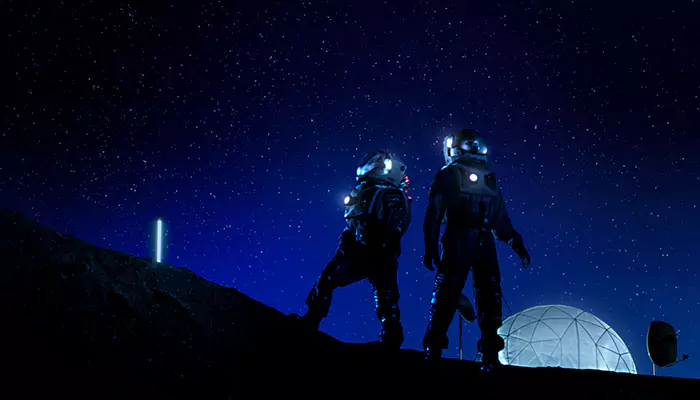Eight Mind-bending Facts About Interstellar Space Every Space Buff Should Know
The great leap of mankind into interstellar space—the region between the stars—is in progress—as NASA's twin Voyager probes continue exploring the mysterious expanse.
- Satavisha
- 23 May, 2025
- 2 mins ago

Eight Mind-bending Facts About Interstellar Space Every Space Buff Should Know
The great leap of mankind into interstellar space—the region between the stars—is in progress—as NASA's twin Voyager probes continue exploring the mysterious expanse.
Interstellar space is the vast expanse between stars that remains shrouded in a veil of mystery—and holds endless surprises and wonders for humans to explore. Interstellar space may appear like an empty void— but it is home to countless mind-bending phenomena. From outlandish interstellar objects to mind-boggling cosmic distances, there is a lot that needs to be explored in this infinite frontier.
We are about to disclose eight fascinating facts about interstellar space. If you are a space buff, brace yourself to set out on an exciting journey to navigate the region beyond our solar system.
Interstellar Space is Not a Dark Void
Earlier, many assumed that interstellar space is a vast expanse of void. However, it is false—it does have lower densities than our solar system, but it still holds molecules and atoms on a small scale—dispersed throughout. These molecules and atoms are vital in offering valuable insights into the characteristics and composition of the medium of interstellar space.

Extreme Temperatures
This region experiences intense temperatures—while some areas are incredibly hot, others are freezing cold. In areas near the active stars, intense stellar activity can spike temperatures up to millions of degrees. Conversely, in regions that are away from stars—temperatures can drop close to -273.15 degrees Celsius (absolute zero)—resulting in a frigid environment.
The Voyager 1 and 2 are Navigating Interstellar Space
The twin Voyager probes were launched in 1977, and both spacecraft are travelling beyond the solar system, exploring interstellar space. Voyager 1 and 2 have offered valuable data associated with the interstellar environment and will continue transmitting information about the cosmic region beyond the sun’s influence.
It Contains Cosmic Dust
A notable component of this region beyond our solar system is cosmic dust—minute particles constituting elements like carbon, ice, and silicates. These microscopic grains of dust play a critical role in planet formation—serving as foundational blocks that will create star systems in the future.
It is Not Entirely Dark
The region beyond our solar system may appear dark—but it is not devoid of light. Interstellar space receives faint radiation called CMB (cosmic microwave background). This radiation is emitted by the remnants of the universe in its early phase. CMB can help scientists gather more information about how the cosmos originated and evolved.
Interstellar Space Experiences Stellar Winds
Stars generate intense stellar winds that blow materials. These winds constitute charged, high-speed particles that hold trapped matter and energy from their respective star systems. These winds, over time, enrich the interstellar medium by scattering various compounds and elements.
Interstellar Space is Expanding Continuously
The vast cosmic region beyond our solar system is not stationary. It is expanding continuously, and the ongoing expansion is propelled by the force generated by dark energy. As a result, interstellar space is continually altering the cosmic landscape. This expansion will have discerning intimation for our universe’s fate and interstellar exploration in the future.
We Had An Interstellar Visitor, Oumuamua
A strange object rushed through the solar system in 2017. The object was following a steep trajectory, and scientists concluded that it was travelling from interstellar space, the first verified object from outside the solar system to visit us. Scientists called it ‘Oumuamua,’ but sadly, researchers could not observe it at close range and failed to draw vivid conclusions. But what we do know is that Oumuamua was big and fast-moving.
Over the years, more advanced technology will be created by engineers to study interstellar space and gather valuable data. Until then, Voyager 1 and 2 will continue transmitting information that will shed light on the vast cosmic region beyond our solar










